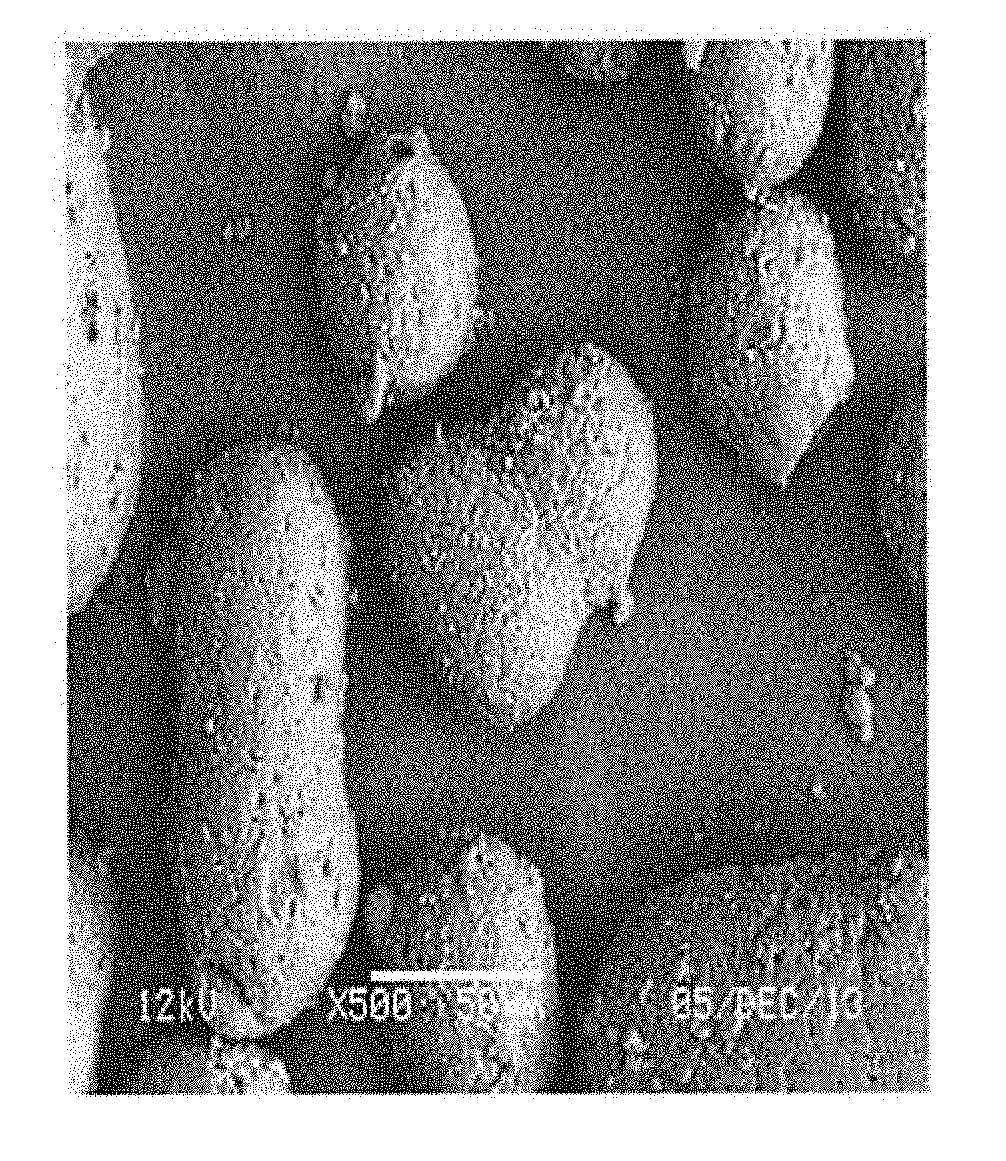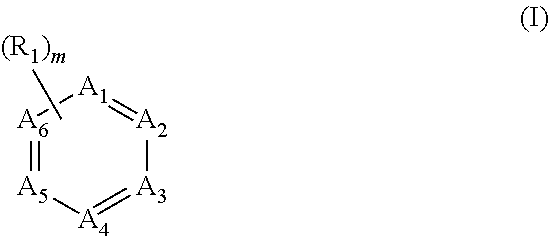Dispersant for use in synthesis of polyaryletherketones
a technology of dispersant and polyarylether, which is applied in the field of dispersant for use in the synthesis of polyarylether, can solve the problems of large gelled polymer mass in the reactor, difficult to handle, and difficult to achieve the effect of synthesis speed and high efficiency
- Summary
- Abstract
- Description
- Claims
- Application Information
AI Technical Summary
Benefits of technology
Problems solved by technology
Method used
Image
Examples
example 1
[0121]A PEKK polymer was formed by use of the components described in the following table.
[0122]
ComponentMol. Wt. (Mn)MolesGramsDiphenyl ether (2% Out of170.210.180130.66balance)Terephthaloyl chloride203.020.141228.68Isophthaloyl chloride203.020.03517.14Benzoyl chloride140.570.0088291.241Aluminum chloride (anhydrous)133.340.749100Cyanuric acid129.070.03234.17Methylene chloride (anhydrous)——800
[0123]The solids content was 17%. The reactor was a 3 necked flask with agitation at 300 rpm. The heating profile was −20° C. to −30° C. for 0.5 hours, 0° C. to 20° C. for 2 hours and room temperature (about 20° C.) for 9.5 hours. The theoretical yield was 26 grams.
[0124]The reaction was carried out under nitrogen in a dry ice (850 g) an isopropanol bath (1800 mL). Diphenyl ether (2 mol % out of balance with respect to the acid chlorides), the acid chlorides and the cyanuric acid were added to the flask and the solvent was then added while stirring at 100 rpm. The mixture was cooled to at least...
PUM
| Property | Measurement | Unit |
|---|---|---|
| aspect ratio | aaaaa | aaaaa |
| size | aaaaa | aaaaa |
| dielectric constant | aaaaa | aaaaa |
Abstract
Description
Claims
Application Information
 Login to View More
Login to View More - R&D
- Intellectual Property
- Life Sciences
- Materials
- Tech Scout
- Unparalleled Data Quality
- Higher Quality Content
- 60% Fewer Hallucinations
Browse by: Latest US Patents, China's latest patents, Technical Efficacy Thesaurus, Application Domain, Technology Topic, Popular Technical Reports.
© 2025 PatSnap. All rights reserved.Legal|Privacy policy|Modern Slavery Act Transparency Statement|Sitemap|About US| Contact US: help@patsnap.com



